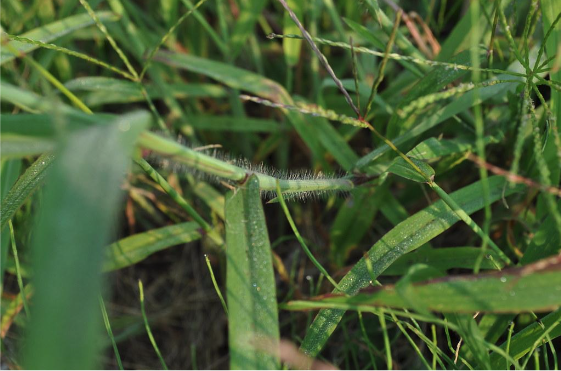Utilizing Crabgrass as Livestock Forage
go.ncsu.edu/readext?699166
en Español / em Português
El inglés es el idioma de control de esta página. En la medida en que haya algún conflicto entre la traducción al inglés y la traducción, el inglés prevalece.
Al hacer clic en el enlace de traducción se activa un servicio de traducción gratuito para convertir la página al español. Al igual que con cualquier traducción por Internet, la conversión no es sensible al contexto y puede que no traduzca el texto en su significado original. NC State Extension no garantiza la exactitud del texto traducido. Por favor, tenga en cuenta que algunas aplicaciones y/o servicios pueden no funcionar como se espera cuando se traducen.
Português
Inglês é o idioma de controle desta página. Na medida que haja algum conflito entre o texto original em Inglês e a tradução, o Inglês prevalece.
Ao clicar no link de tradução, um serviço gratuito de tradução será ativado para converter a página para o Português. Como em qualquer tradução pela internet, a conversão não é sensivel ao contexto e pode não ocorrer a tradução para o significado orginal. O serviço de Extensão da Carolina do Norte (NC State Extension) não garante a exatidão do texto traduzido. Por favor, observe que algumas funções ou serviços podem não funcionar como esperado após a tradução.
English
English is the controlling language of this page. To the extent there is any conflict between the English text and the translation, English controls.
Clicking on the translation link activates a free translation service to convert the page to Spanish. As with any Internet translation, the conversion is not context-sensitive and may not translate the text to its original meaning. NC State Extension does not guarantee the accuracy of the translated text. Please note that some applications and/or services may not function as expected when translated.
Collapse ▲
Crabgrass has gotten a bad reputation as an aggravating weed in yards, gardens or pastures. In livestock operations however, crabgrass is a high-quality, palatable forage which livestock love. Whether some producers realize it, at some point it has probably helped them make it through summer grazing when fescue is in its “summer slump.”
Crabgrass is a summer annual forage that will germinate in the spring when soil temperatures reach around 60 degrees Fahrenheit and die off in the fall. It can grow up to two feet tall in most situations. To get crabgrass established, don’t plant seeds more than a half inch in the ground and around 2-5 pounds per acre. There are several different varieties of crabgrass that are available. Crabgrass is a summer annual, once summer is over it will die and not come back until spring of the following year. To prevent erosion, and provide ground cover that can be grazed, it is recommended that a winter annual be planted in its place in the fall once the crabgrass has done its thing. It can also be broadcasted in feeding or high traffic areas for quick and excellent ground cover.
Even though it is an annual, in many cases if it is managed the right way, producers can make it come back year after year, reducing the amount of seed needed to be purchased and replanted. Crabgrass will generally produce enough seed over a season to where it will create a seed bank for the next year. To help make it more successful for the next year, producers should let it seed out at least once, then mow it with a rotary mower or mow it to make hay off of it. This will help scatter more seed heads in the pastures.
One advantage of using crabgrass as a grazing forage, is that it is tolerant to defoliation and can be grazed or mowed down to 3 inches. Studies have shown that cattle can be rotationally grazing on crabgrass when it reaches 12 inches and be grazed down to 3-5 inches and then turned back into the pastures when the crabgrass grows back to around 8 inches.
Another advantage is turning livestock out on crabgrass pastures in the summer when fescue is in its “summer slump.” Since fescue is a cool season perennial, it is actively growing in the spring and fall. Research has shown that fescue grows more over the winter than it will in the heat of summer. So, if you have crabgrass for livestock to graze during the summer, you can allow fescue pastures to rest during this period. Tall KY-31 fescue contains an endophyte fungus, which makes it hardy, but is also toxic to livestock causing fescue toxicity. Utilizing crabgrass or another summer annual can help with fescue toxicity in livestock. Seed heads of tall fescue can contain the highest levels of endophyte and generally are present during the summer months. Removing livestock from fescue pastures during the summer and putting them on a crabgrass forage can help lower the amount of toxins the animal consumes and in return, allowing livestock to grow and perform much better than they would while grazing tall fescue.
When thinking about forages, crabgrass can be another tool producers can utilize in their grazing management plan. It is a high-quality forage – that can reseed year after year – that livestock love. It can also allow livestock producers a different forage for their livestock to graze during the summer when cool season perennials go dormant. If you have any questions or want more information, contact Adam Lawing via email or at 336-308-6012.




